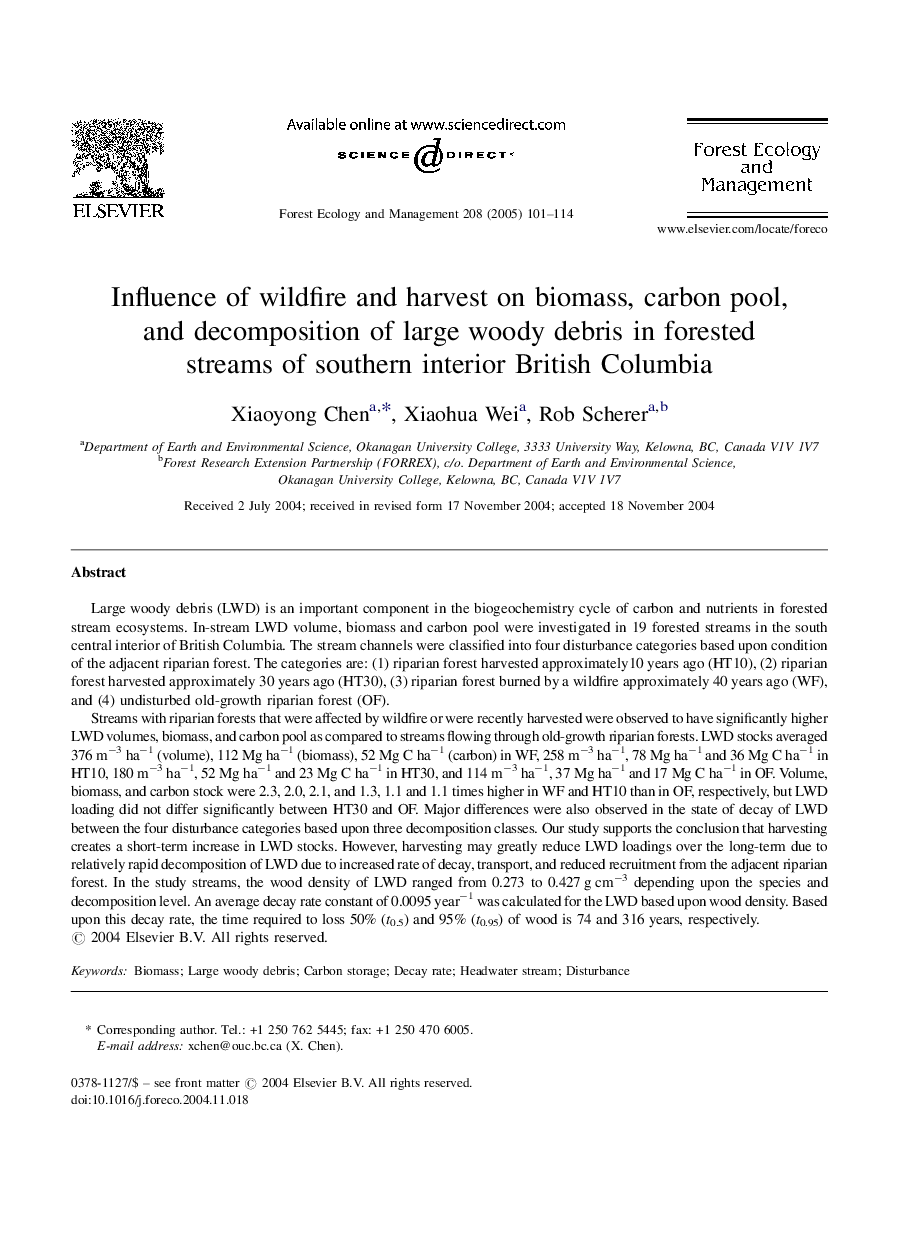| Article ID | Journal | Published Year | Pages | File Type |
|---|---|---|---|---|
| 9620411 | Forest Ecology and Management | 2005 | 14 Pages |
Abstract
Streams with riparian forests that were affected by wildfire or were recently harvested were observed to have significantly higher LWD volumes, biomass, and carbon pool as compared to streams flowing through old-growth riparian forests. LWD stocks averaged 376 mâ3 haâ1 (volume), 112 Mg haâ1 (biomass), 52 Mg C haâ1 (carbon) in WF, 258 mâ3 haâ1, 78 Mg haâ1 and 36 Mg C haâ1 in HT10, 180 mâ3 haâ1, 52 Mg haâ1 and 23 Mg C haâ1 in HT30, and 114 mâ3 haâ1, 37 Mg haâ1 and 17 Mg C haâ1 in OF. Volume, biomass, and carbon stock were 2.3, 2.0, 2.1, and 1.3, 1.1 and 1.1 times higher in WF and HT10 than in OF, respectively, but LWD loading did not differ significantly between HT30 and OF. Major differences were also observed in the state of decay of LWD between the four disturbance categories based upon three decomposition classes. Our study supports the conclusion that harvesting creates a short-term increase in LWD stocks. However, harvesting may greatly reduce LWD loadings over the long-term due to relatively rapid decomposition of LWD due to increased rate of decay, transport, and reduced recruitment from the adjacent riparian forest. In the study streams, the wood density of LWD ranged from 0.273 to 0.427 g cmâ3 depending upon the species and decomposition level. An average decay rate constant of 0.0095 yearâ1 was calculated for the LWD based upon wood density. Based upon this decay rate, the time required to loss 50% (t0.5) and 95% (t0.95) of wood is 74 and 316 years, respectively.
Related Topics
Life Sciences
Agricultural and Biological Sciences
Ecology, Evolution, Behavior and Systematics
Authors
Xiaoyong Chen, Xiaohua Wei, Rob Scherer,
